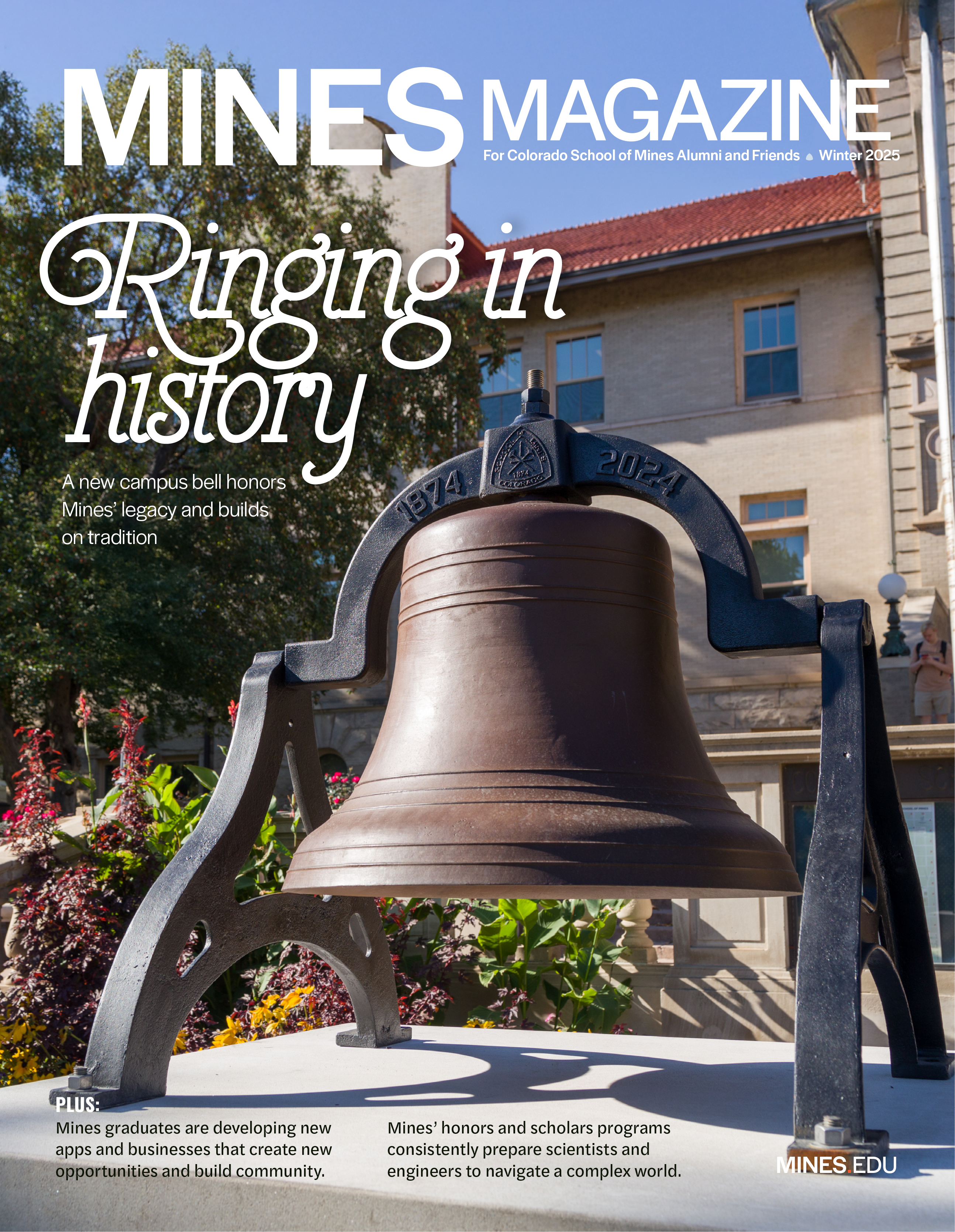Catalyzing Change: University Innovation Fellows bring an entrepreneurial mindset to Mines
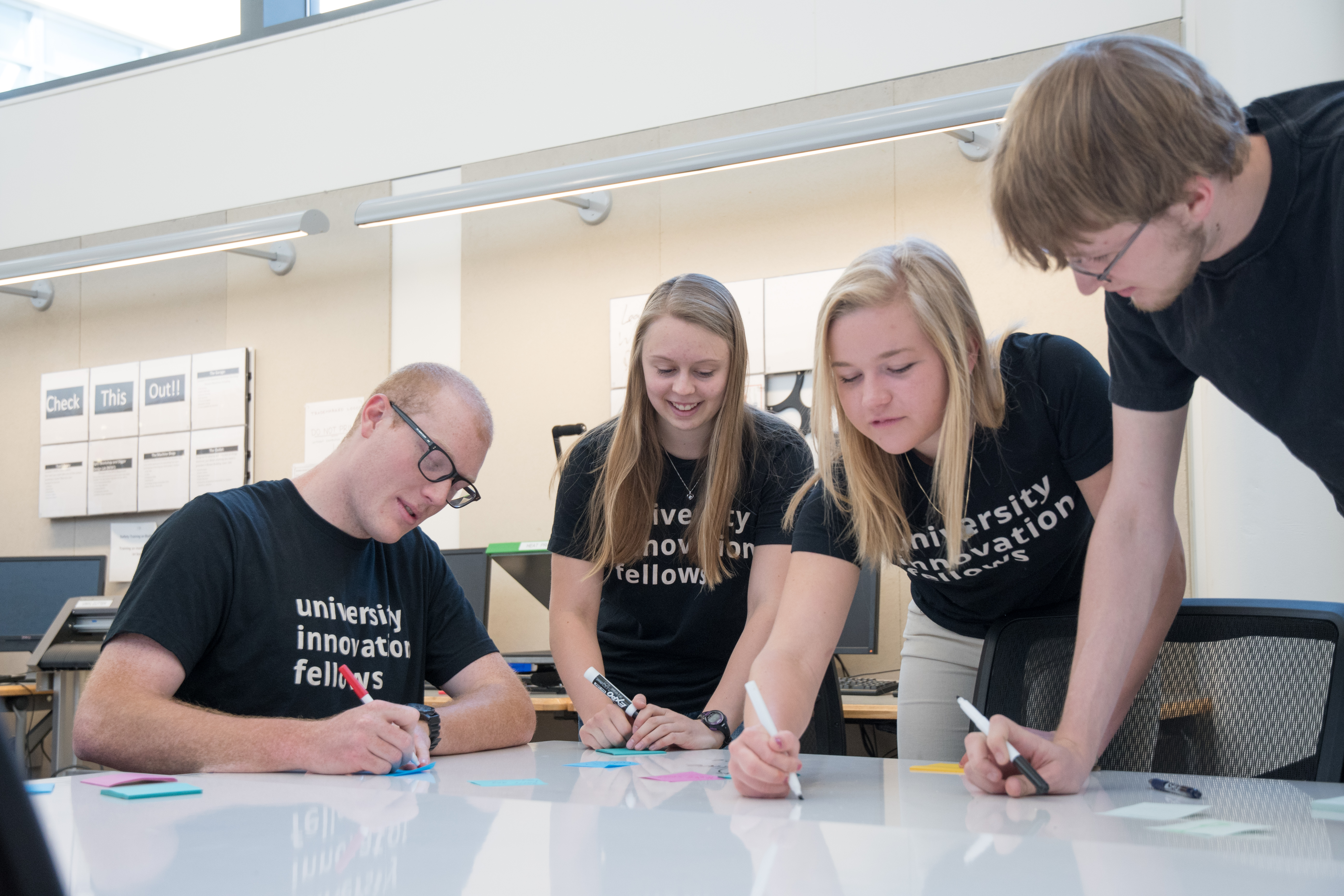
Between campus jobs, Greek life, volunteer work, intramural sports and, of course, the school’s rigorous academics, Mines’ 2017 University Innovation Fellows have pretty packed schedules.
So it’s both ironic and appropriate that these four go-getters—Sarah Ingram, Emma May, Tanner McAdoo and Sam Warfield—have added a pretty big project to their agendas that’s meant to help their peers tune out the demands of academic life, if only for a little while.
Early this year, they were the latest group of Orediggers to undergo six weeks of training on design thinking (a specific approach to problem-solving that combines creativity and analysis), the lean methodology and how to map their entrepreneurial campus ecosystem. They joined 350 students and faculty members from 80 colleges and universities from around the world for the UIF program’s Silicon Valley Meetup, held March 9-13 at Stanford University’s d.school, and came back ready to change their campus.
At the top of their list is a plan to transform part of a lounge in the Ben Parker Student Center—just past the bookstore—into a space for relaxation and low-stakes creativity.
“We definitely want fun seating—bean bag chairs, comfy couches, chairs where people can decompress and relax a bit,” said Ingram, a chemical and biological engineering major who took the lead on the project. Also on the shopping list are easels, paper and paint, drawing supplies, maybe whiteboards on the walls for fun doodles and perhaps Legos or other creative toys.
“The intent is to get ourselves in a better state when we’ve had a really stressful day,” Ingram said. “Mines is a fast-paced place, and there are plenty of study areas and makerspaces, but there’s not really the other side of things.”
Warfield, a computer science major and tuba player who’s been wanting to get into painting, knows the value of participating in artistic activities. “It lets me unwind, but it also engages a different side of my brain,” he said. He’d love to see some musical instruments in the space but realizes they’re on the larger and pricier end of the spectrum. “One of the best ways to get new ideas is just being thrown into a different environment,” he said.
“We want to foster that sense of creativity on campus,” Ingram said. “We want students to see people having fun and smiling and say, ‘Yeah, I want to do that.’”
Ultimately, though, the STEAM Vent—the working name for the space—is about easing the pressures students sometimes feel. “It’s a place to unplug from Mines and not be reminded that you have so many things to do,” Warfield said.
The group received $3,440 from the Mines Philanthropy Council to purchase materials and found willing partners in Mines administrators, including Dean of Students Derek Morgan, who worked with them to secure the space.
“Mines is a small campus, so making sure there’s a physical location and then getting permission to use that space was a challenge,” said McAdoo, a metallurgical and materials engineering major. “The team went on an exploratory mission—we split up and scoured campus and found a couple of places just by keeping our eyes open.”
The process has required putting the communication skills the team has learned to the test. “You really have to make it worth their while to listen to your ideas,” Ingram said. “Not only why you want it but why other students should want it even if it doesn’t benefit them directly.”
Ingram said she’s gotten much better at communicating via email, contacting what she calls “important people,” making connections and holding her own. “I didn’t see myself doing this side of engineering—the logistics and background work. I’ve really enjoyed it so far.”
The idea for the space is grounded in what the fellows have heard from other students. They surveyed campus to find out if this kind of space would be something students want. “We’ve gotten a lot of feedback about the need for a place like this,” Ingram said.
“Students are anticipating this, but they don’t know what to expect. I don’t know what it’s going to look like,” McAdoo said. “It’s not a million-dollar project—it’s very much an experiment for students, by students, and one we hope will be successful.”
“Our end goal is to make it permanent,” Ingram said. “If we get a great response, we’ll want to spread it to other places on campus.”
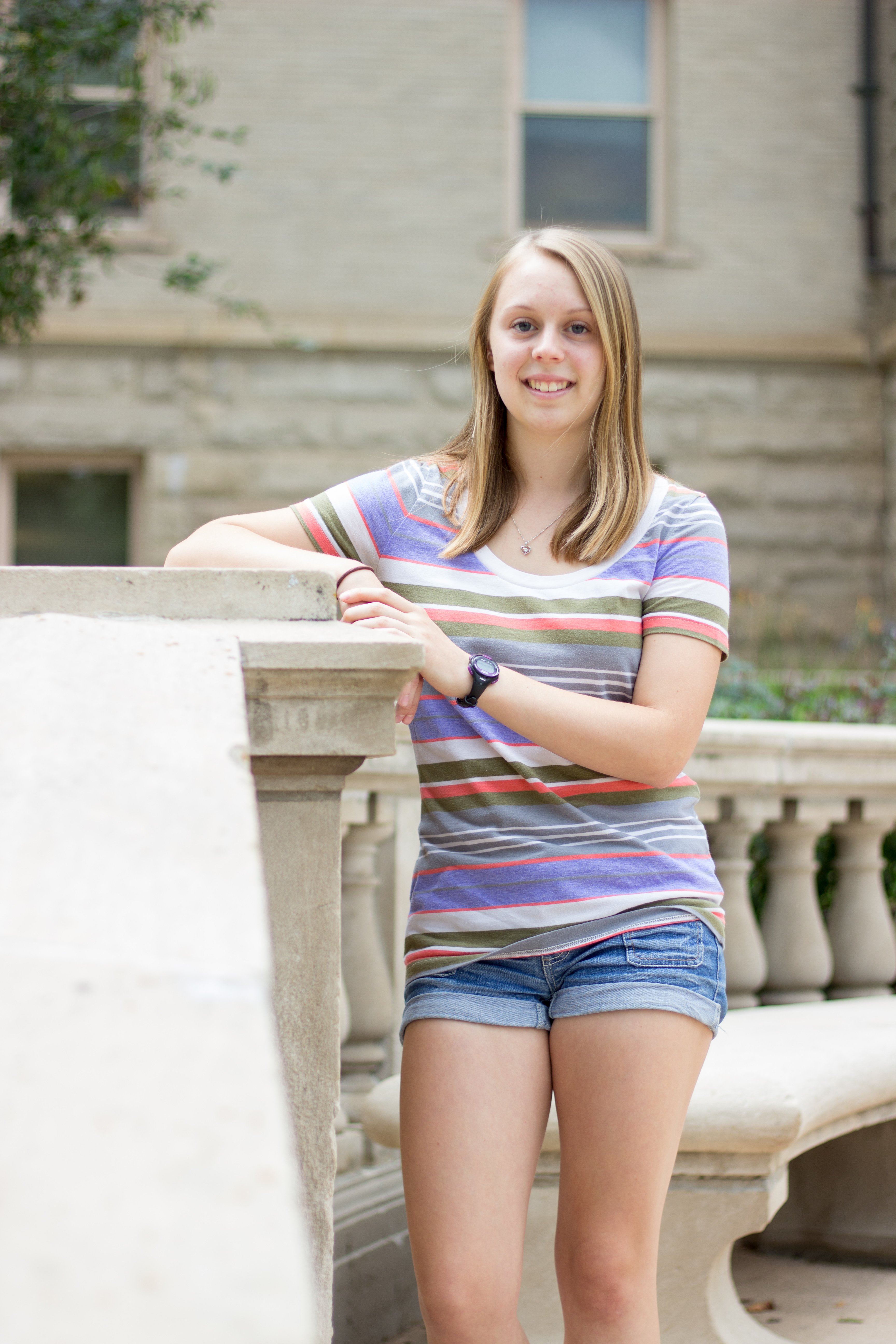
Sarah Ingram
Chemical & Biochemical Engineering
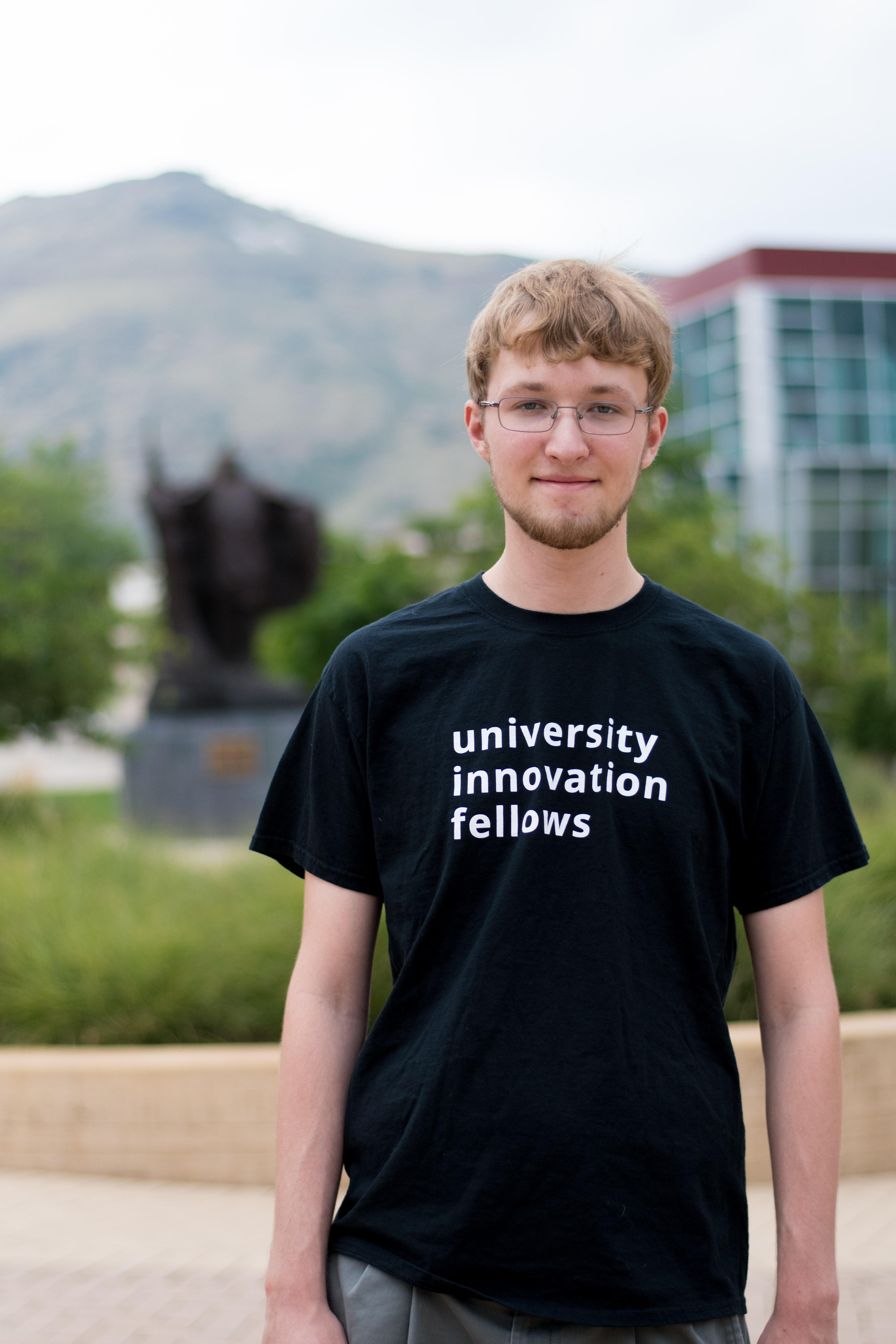
Sam Warfield
Computer Science
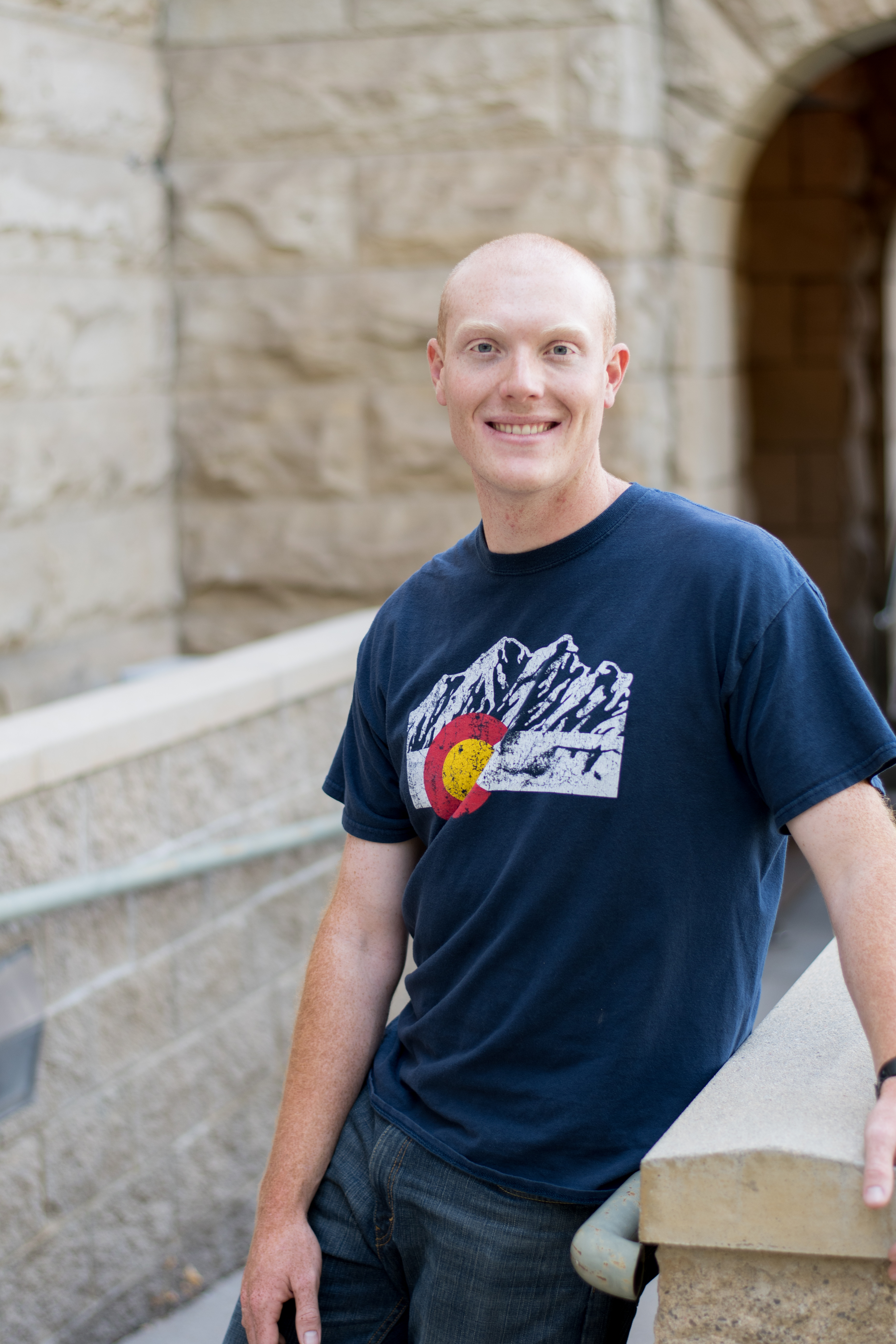
Tanner McAdoo
Metallurgical & Materials Engineering
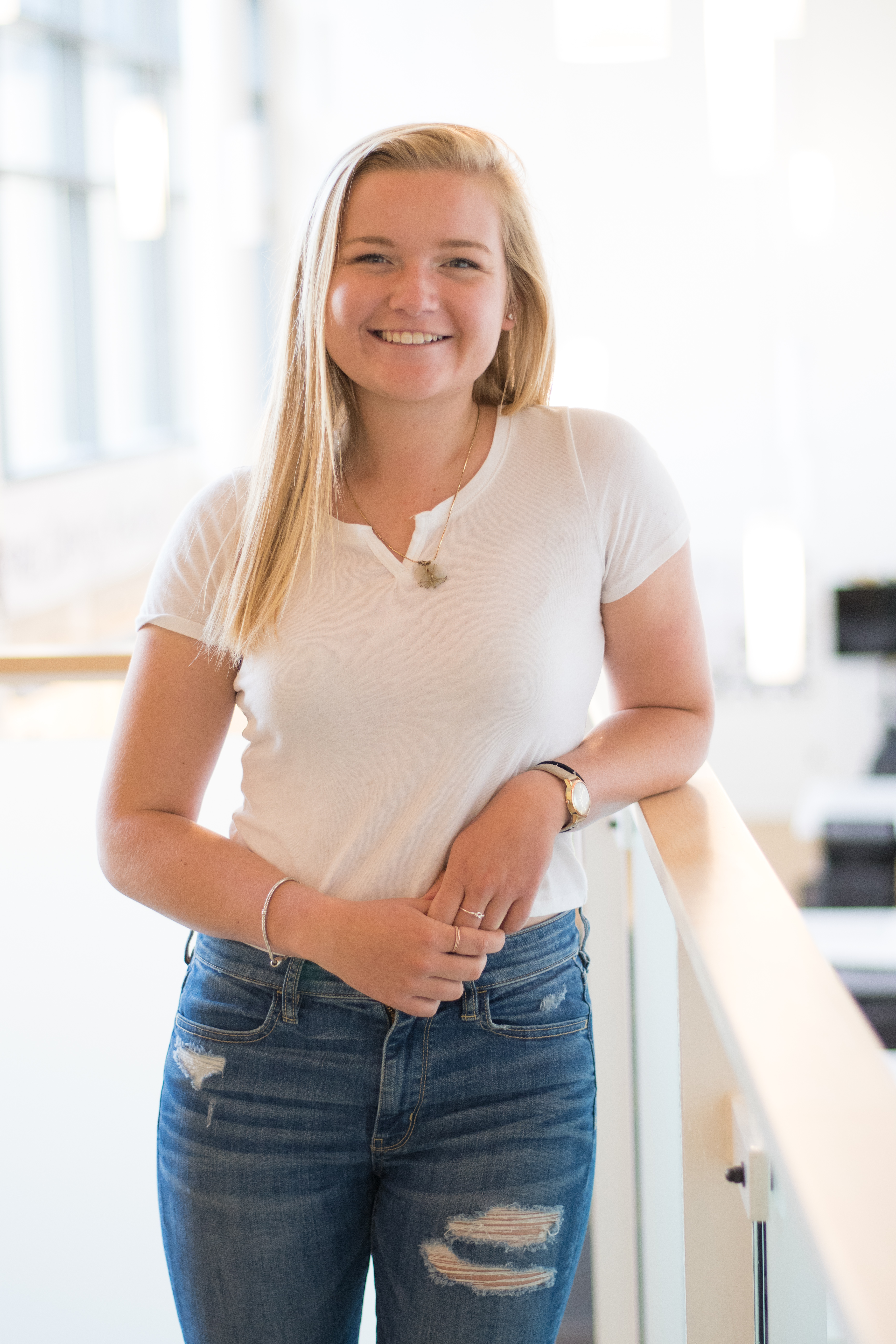
Emma May
Computer Science
While this project has been front and center, the fellows have plenty of other irons in the fire, bringing to bear both their innate talents and the skills they’ve learned through their UIF training, which was funded by the dean of the College of Engineering and Computational Sciences, Kevin Moore.
Moore says this third cohort of Mines fellows continues a pattern of successful innovation. “I think they’ve made a huge difference,” he said, citing the creation of themed learning communities, makerspaces and innovation competitions. “They came back from their training poking and prodding and building this great groundswell,” Moore said.
May, a computer science major, came back from the Silicon Valley Meetup eager to put ideas into action. She’s been working for Mines’ new Center for Entrepreneurship and Innovation—which was established in part due to the efforts of previous University Innovation Fellows. In addition to building the center’s website, May is working with Director Werner Kuhr to develop events throughout the school year—startup weekends, innovation workshops and the like.
In that vein, May wants to organize a hackathon. The term usually refers to events where computer programmers quickly brainstorm and execute software projects, but what May has in mind would take on Mines itself. “It would be a learning hackathon, focused on learning design-thinking principles and what students can improve on campus,” she said. “It’ll be a low-stakes trial, and then we’ll do a bigger one.”
May is surprised that Mines hasn’t put together such an event already. “We have the culture for it, but we just haven’t done it,” she said. “We should be a hub for that.”
What May is most excited about this semester, however, is working with Program Director Leslie Light to revamp Cornerstone Design@Mines (formerly the Engineering Practices Introductory Course Sequence, or EPICS), a sequence of courses that aim to build students’ confidence in applying fundamental design concepts to solve complex, open-ended problems. All Mines students are required to take at least one cornerstone course.
“I think it should be the most fun class students take,” said May, who has heard some feedback from students with problems she thinks she can help address. “I want to help improve the rapport between students and faculty and making it more collaborative—I have big dreams for it,” she said. “We’re incorporating more design-thinking principles, more active learning, more activities.”
One issue has been team projects, where some students feel the workload has not been distributed evenly. One way to address this would be to talk more about leadership styles in the class. “I have had a lot of leadership training, and it has made my group experiences a lot better,” May said.
McAdoo has other ideas. He is serving as a peer mentor this semester, meeting with 30 freshmen once a week and guiding them through the M Climb. He’s also recently discovered the group Student Advocates Against Violence and for Education on campus and sees it as an opportunity for him and his fraternity, Kappa Sigma, to make a difference. But his big idea taps into his current passion for Greek life.
“I see a lot of potential in the fraternities and sororities,” McAdoo said. He wants to see Greek life have a bigger role at Mines, to bring more of the energy and social skills that members have across that 120-yard divide between their houses and campus.
McAdoo also wants more Mines students to consider joining Greek life, which will require challenging misconceptions on both ends. “Seeing huge fraternities and sororities at other schools, the stereotypes, it wasn’t something I wanted to participate in,” McAdoo said. “But here at Mines, they’re awesome social groups of kids just like me. And students here don’t always realize their full potential as social animals.”
“We are all Orediggers. We’ve all got that something that makes us special,” McAdoo said.
Like McAdoo, Ingram wants to better integrate a segment of the campus population into the Mines community. “Our international population is so large, but it feels kind of isolated,” she said. She noted that international students often connect with one another, “but I’m wondering how to create a more inclusive feeling between them and everyone else.”
Events are the first thing that come to mind, Ingram said. Common spaces can also bring people together on a fundamental level, especially when everyone experiences similar stressors.
Another of Ingram’s goals that’s more of a “moonshot” is to organize and eventually host a regional meetup for University Innovation Fellows from various institutions. “I would love to recap with them, see what they’re doing,” she said. “I’m always in contact with other fellows on Facebook and elsewhere, even as far away as India—it’s super awesome to see the progress they’re making.”
Both May and McAdoo said being willing to risk failure has been key to their own progress. While the stars have aligned so far, “you have to be okay with getting shut down,” May said. “That’s how you’re going to learn.”
According to McAdoo, “You have to be able to take that leap.”


